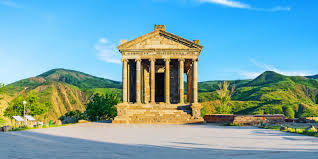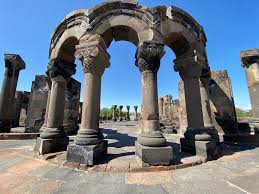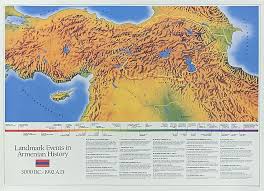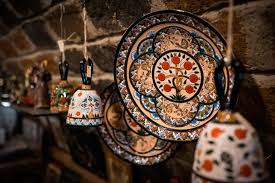
The Charm of Authentic Armenian Experiences
Armenia, a land steeped in history and tradition, offers a myriad of authentic experiences that captivate the soul and ignite the senses. From its ancient monasteries perched on rugged cliffs to the bustling markets filled with vibrant colours and aromas, Armenia beckons travellers to immerse themselves in its rich tapestry of culture.
One of the most authentic experiences in Armenia is indulging in its culinary delights. The country’s cuisine is a reflection of its diverse heritage, blending flavours from the Middle East, Europe, and Asia. Savouring traditional dishes like khorovats (barbecue), dolma (stuffed grape leaves), and lavash (flatbread) not only tantalises the taste buds but also provides a glimpse into Armenia’s culinary legacy.
Exploring Armenia’s ancient monasteries is another profound experience that transports visitors back in time. The majestic Tatev Monastery, nestled amidst lush greenery and overlooking stunning gorges, exudes an aura of serenity and spirituality. Stepping inside these sacred sites allows one to connect with Armenia’s religious heritage and marvel at the architectural wonders crafted by skilled artisans centuries ago.
For those seeking a more immersive experience, staying in a traditional Armenian guesthouse offers a glimpse into local life and hospitality. From cosy rooms adorned with intricate carpets to hearty home-cooked meals prepared with love, these guesthouses provide a warm and welcoming environment that fosters genuine connections with the local community.
Moreover, participating in cultural festivals and celebrations allows visitors to witness Armenia’s vibrant traditions come to life. Whether dancing to traditional folk music at a village festival or observing intricate crafts being made at a local market, these events showcase the heart and soul of Armenia’s cultural heritage.
In essence, authentic Armenian experiences are not merely about sightseeing or sampling local cuisine – they are about immersing oneself in the essence of Armenia, connecting with its people, history, and traditions on a deeper level. Each experience unravels a new layer of this enchanting country, leaving an indelible mark on those who embrace it wholeheartedly.
Discover Authentic Armenian Experiences: A Journey Through Culture, Cuisine, and Community
- Immerse yourself in Armenia’s rich cultural heritage
- Savour the diverse and flavourful Armenian cuisine
- Explore ancient monasteries and historical landmarks
- Experience genuine hospitality in traditional guesthouses
- Participate in vibrant cultural festivals and events
- Create lasting memories by connecting with local communities
Challenges of Authentic Armenian Experiences: Navigating Language Barriers, Comfort Levels, and Cultural Nuances
- Limited availability of English-speaking guides may pose communication challenges for non-Armenian speakers.
- Some authentic Armenian experiences, such as rural village stays, may lack modern amenities and comforts.
- Traditional Armenian cuisine, while delicious, may not cater to all dietary preferences or restrictions.
- Exploring remote cultural sites and monasteries can involve long journeys on rough terrain, which may not be suitable for all travellers.
- Participating in local festivals and events may require flexibility in scheduling as dates and timings can sometimes change unexpectedly.
- Authentic Armenian experiences often involve interacting with locals who predominantly speak Armenian, leading to potential language barriers for tourists.
- Certain traditional activities or rituals may have cultural nuances that could be misunderstood by visitors unfamiliar with Armenian customs.
Immerse yourself in Armenia’s rich cultural heritage
Immersing yourself in Armenia’s rich cultural heritage through authentic experiences allows you to delve deep into the soul of this captivating country. From exploring ancient monasteries that whisper tales of centuries past to savouring traditional dishes that have been passed down through generations, each encounter offers a profound connection to Armenia’s vibrant history and traditions. By immersing yourself in Armenia’s cultural tapestry, you not only gain a deeper appreciation for its heritage but also forge meaningful memories that resonate long after your journey has ended.
Savour the diverse and flavourful Armenian cuisine
Indulging in the diverse and flavourful Armenian cuisine is a delightful pro of authentic Armenian experiences. From succulent khorovats (barbecue) to aromatic dolma (stuffed grape leaves) and freshly baked lavash (flatbread), Armenian culinary delights offer a tantalising journey for the taste buds. Each dish tells a story of the country’s rich heritage, blending unique flavours and ingredients that reflect Armenia’s cultural diversity. Savouring these traditional delicacies not only satisfies hunger but also provides a deeper connection to Armenia’s culinary traditions, making every meal a memorable and enriching experience.
Explore ancient monasteries and historical landmarks
Immerse yourself in the allure of authentic Armenian experiences by embarking on a journey to explore ancient monasteries and historical landmarks. From the awe-inspiring Tatev Monastery perched atop rugged cliffs to the majestic Geghard Monastery carved into the rock face, each site tells a story of Armenia’s rich cultural heritage and spiritual significance. By wandering through these hallowed grounds and marvelling at the intricate architecture that has withstood the test of time, you not only gain a deeper appreciation for Armenia’s past but also forge a profound connection with its enduring legacy.
Experience genuine hospitality in traditional guesthouses
Immerse yourself in the warmth of Armenian hospitality by staying in traditional guesthouses, where genuine connections and heartfelt welcomes await. These charming accommodations not only offer a comfortable retreat but also provide a unique opportunity to experience the heartfelt generosity and kindness of the local hosts. From cosy rooms adorned with traditional decor to homemade meals prepared with love and care, staying in a traditional Armenian guesthouse promises an authentic and enriching cultural experience that leaves a lasting impression on visitors.
Participate in vibrant cultural festivals and events
Immersing oneself in vibrant cultural festivals and events is a delightful pro of authentic Armenian experiences. These lively gatherings offer a unique opportunity to witness the rich tapestry of Armenian traditions come alive through music, dance, art, and culinary delights. From colourful folk performances that showcase centuries-old dances to artisanal markets brimming with handcrafted treasures, participating in these events provides a firsthand insight into the vibrant spirit and cultural heritage of Armenia. Engaging with locals during these festivities fosters connections and creates lasting memories that truly embody the essence of Armenian culture and hospitality.
Create lasting memories by connecting with local communities
Immersing oneself in authentic Armenian experiences offers a unique opportunity to create lasting memories by connecting with local communities. By engaging with the warm and hospitable people of Armenia, travellers can gain insights into their daily lives, traditions, and values. Whether sharing a meal with a local family, learning traditional crafts from skilled artisans, or participating in community celebrations, these interactions foster genuine connections that go beyond mere tourism. Through these meaningful exchanges, visitors not only enrich their own travel experiences but also contribute to the preservation and promotion of Armenia’s rich cultural heritage for generations to come.
Limited availability of English-speaking guides may pose communication challenges for non-Armenian speakers.
Travellers seeking authentic Armenian experiences may encounter a significant challenge due to the limited availability of English-speaking guides in the country. This language barrier can pose communication difficulties for non-Armenian speakers, hindering their ability to fully engage with and understand the rich cultural heritage and history that Armenia has to offer. Without proficient English-speaking guides, visitors may miss out on valuable insights and explanations that enhance their overall experience, highlighting the importance of addressing language barriers to ensure all travellers can fully appreciate the authenticity of Armenian encounters.
Some authentic Armenian experiences, such as rural village stays, may lack modern amenities and comforts.
While authentic Armenian experiences like rural village stays offer a unique insight into local life and traditions, they may come with the con of lacking modern amenities and comforts. Staying in remote villages often means foregoing luxuries such as air conditioning, Wi-Fi, or sophisticated bathroom facilities. However, this rustic charm also presents an opportunity for visitors to disconnect from the hustle and bustle of modern life and truly immerse themselves in the simplicity and authenticity of rural Armenian living. It’s a trade-off between convenience and cultural immersion, where the rewards of experiencing genuine hospitality and traditional way of life outweigh the temporary absence of modern comforts.
Traditional Armenian cuisine, while delicious, may not cater to all dietary preferences or restrictions.
Traditional Armenian cuisine, renowned for its rich flavours and hearty dishes, may present a challenge for individuals with specific dietary preferences or restrictions. The emphasis on meat, dairy, and bread in many traditional Armenian meals can pose difficulties for vegetarians, vegans, or those with gluten intolerance. While there are vegetarian and vegan options available in Armenian cuisine, they may not be as readily accessible or diverse compared to other culinary traditions. Navigating dietary restrictions while seeking authentic Armenian experiences may require careful consideration and communication to ensure a satisfying dining experience for all.
Exploring remote cultural sites and monasteries can involve long journeys on rough terrain, which may not be suitable for all travellers.
Embarking on a journey to explore remote cultural sites and monasteries in Armenia can present a significant challenge for some travellers due to the long distances and rough terrain involved. The rugged landscapes and winding roads leading to these hidden gems may not be suitable for individuals with mobility issues or those seeking a more leisurely travel experience. Navigating through remote areas can also test one’s endurance and patience, requiring a spirit of adventure and readiness to embrace the unexpected. While the allure of discovering off-the-beaten-path treasures is undeniable, it is essential for travellers to consider their physical capabilities and comfort levels before venturing into these remote corners of Armenia.
Participating in local festivals and events may require flexibility in scheduling as dates and timings can sometimes change unexpectedly.
Participating in local festivals and events in Armenia, while enriching and culturally immersive, may present a challenge in terms of scheduling. As dates and timings of these gatherings can occasionally shift unexpectedly, visitors are encouraged to maintain flexibility in their plans to fully embrace the spontaneity and vibrancy of Armenian celebrations. This unpredictability adds a sense of adventure to the experience, allowing participants to adapt and immerse themselves in the dynamic tapestry of Armenian culture as it unfolds before them.
Authentic Armenian experiences often involve interacting with locals who predominantly speak Armenian, leading to potential language barriers for tourists.
Truly immersing oneself in authentic Armenian experiences often comes with the challenge of navigating language barriers, as many locals primarily speak Armenian. While this can pose a hurdle for tourists seeking to engage meaningfully with the community, it also presents an opportunity for cultural exchange and learning. Overcoming these language barriers not only requires patience and creativity but also fosters a deeper connection with the local culture, encouraging visitors to embrace the richness of Armenia beyond linguistic differences. By bridging these communication gaps, travellers can unlock a world of authentic experiences that transcend words, relying instead on shared gestures, expressions, and a genuine spirit of curiosity and openness.
Certain traditional activities or rituals may have cultural nuances that could be misunderstood by visitors unfamiliar with Armenian customs.
Visitors engaging in authentic Armenian experiences may encounter challenges due to cultural nuances that are deeply ingrained in traditional activities or rituals. Without a thorough understanding of Armenian customs, some visitors may unintentionally misinterpret or misunderstand the significance of certain practices. This lack of awareness could lead to inadvertent disrespect or confusion, hindering the immersive nature of the experience and potentially creating a sense of disconnect between visitors and the local culture. It is essential for visitors to approach these traditions with an open mind, respect for cultural differences, and a willingness to learn and appreciate the nuances that make authentic Armenian experiences truly enriching.







